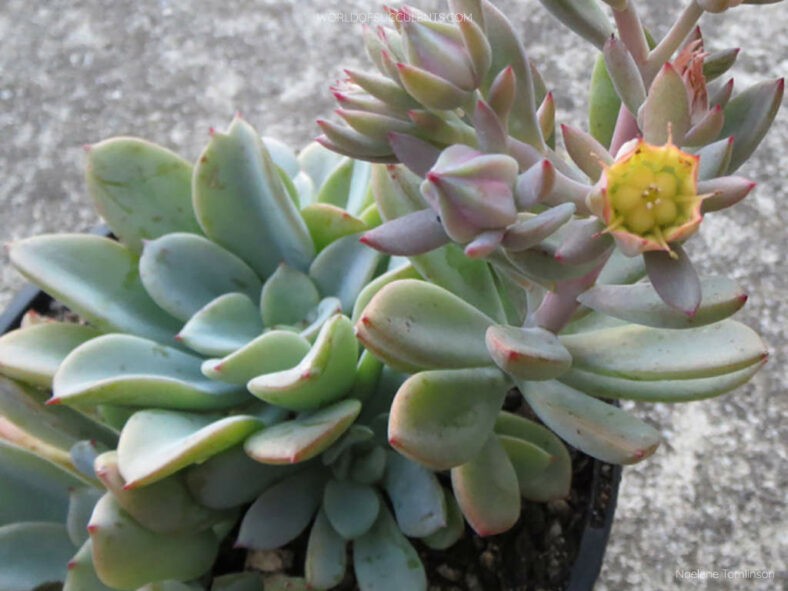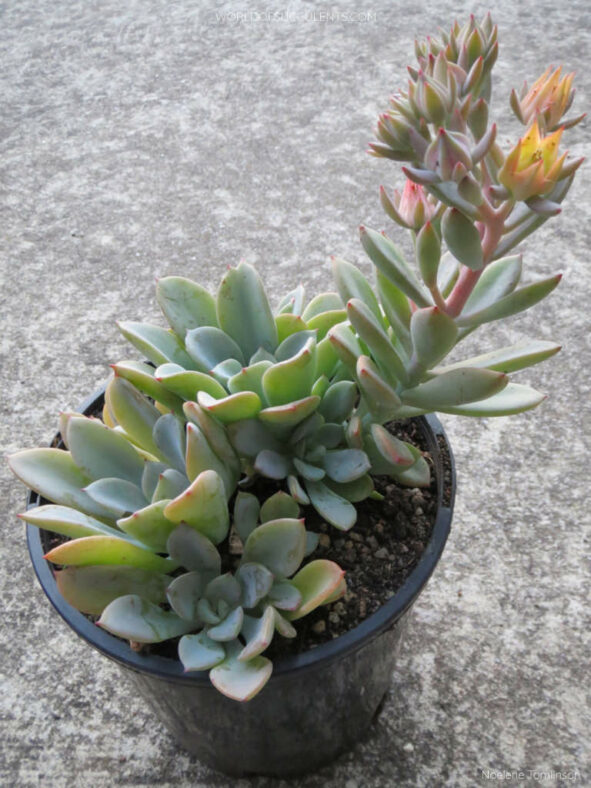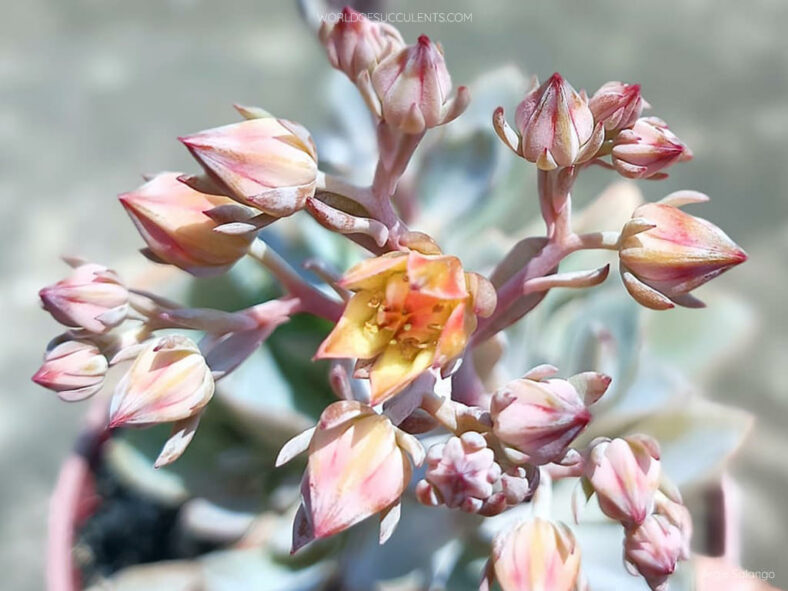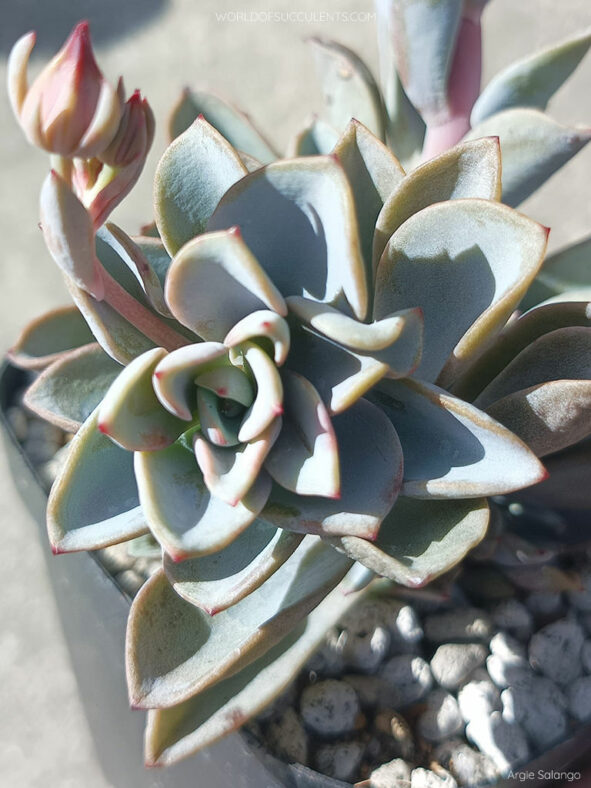If you are looking for a plant that is easy to care for and grows quickly, Graptoveria 'Decairn' is a great choice. This little beauty adds a touch of charm to any room.
Scientific Name
×Graptoveria 'Decairn'
Scientific Classification
Family: Crassulaceae
Subfamily: Sempervivoideae
Tribe: Sedeae
Nothogenus: ×Graptoveria
Origin
×Graptoveria 'Decairn' is an intergeneric hybrid of unknown origin and parentage.
Description
×Graptoveria 'Decairn' is a charming small succulent that forms rosettes of gray-green, channeled leaves with pointed ends. The rosettes can grow up to 4.8 inches (12 cm) long and produce offsets, forming a dense clump. The leaves are thick, fleshy, and covered with a fine, waxy bloom that rubs off when touched. They take on brow hues when exposed to full sun or colder temperatures.
In spring, ×Graptoveria 'Decairn' produces bell-shaped flowers on short stalks with a few branches and fleshy bracts. The flowers have reddish-orange petals and sepals the same color as the leaves.

How to Grow and Care for ×Graptoveria 'Decairn'
Light: ×Graptoveria 'Decairn' requires full sun to partial shade for optimal growth. Therefore, place it near the brightest window in your home. In addition, if you plan to move the plant outside in the spring, do so gradually and avoid exposing it to intense afternoon sun.
Having soil that drains quickly is most important for growing healthy succulents. While many growers prefer to create their own soil mix, commercial ones specially designed for succulents will work fine.
Temperature: High temperatures are not a problem as long as there is plenty of fresh air. However, Graptoveria 'Decairn' is a tender succulent that must be brought indoors if there is a risk of freezing temperatures. It grows best in USDA Plant Hardiness Zones 10a to 11b, with average minimum winter temperatures ranging from 30°F to 50°F (- 1.1°C to 10°C).
Watering: During the growing season, the "soak and dry" method is the preferred schedule for this plant. Water deeply, and then let the soil dry completely before watering again. Water sparingly during the winter, only enough to keep the plant from shriveling.
Fertilizing: Although it can grow well without fertilizer, the plant may benefit from extra nutrients. Feed only during the growing season and use a water-soluble fertilizer diluted to half-strength.
Repotting: If growing in a container, repot as needed in spring or early summer. Ensure the soil is dry before starting.
Propagation: The easiest way to get a good-sized new plant is by offsets, but ×Graptoveria 'Decairn' is also easy to propagate by leaves. Spring and summer are the best times to separate offsets.
Learn more at How to Grow and Care for Echeveria.
Toxicity of ×Graptoveria 'Decairn'
×Graptoveria 'Decairn' has no toxic effects reported. Although it is safe for growing around children and pets, eating the plant is not recommended.
Links
- Back to nothogenus ×Graptoveria
- Succupedia: Browse succulents by Scientific Name, Common Name, Genus, Family, USDA Hardiness Zone, Origin, or cacti by Genus
Photo Gallery
Click on a photo to see a larger version.


